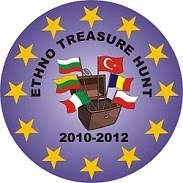Polish Wedding Traditions
***
Traditional Rebraiding of the Polish Bride's Hair
The night before a girl in Poland hears her wedding
bells, her mother and female relatives redo her customary single maidenly braid
into two. This traditional wedding hair style symbolizes the new step the
bride-to-be is taking into marriage.
***
Polish Wedding Reception
The reception celebration usually includes lively
polka music and dancing. If a Polish bride can drink from her glass of wine,
and not spill a drop, she is considered lucky.
The "money dance" is always popular at a
traditional reception in Poland. Guests pin money to the bride's wedding dress
to buy a dance from her. The newlyweds might put these gifts of cash towards
their honeymoon expenses. More traditionally, the maid of honor wears an apron
and collects the money given by the guest to dance with the bride. After all
the guests have danced with the bride, they form a tight circle around her, and
the groom tries to break through the circle while the guests try hard to keep
him out. Once he breaks through, he picks up his bride and carries her away
from the wedding reception. The money collected during the dance is sent with
them to spend on their honeymoon.
***
At the wedding reception, the bride will dance with
her father, whilst a relative holds out an apron. Guests who place money in the
apron win the opportunity to dance with the bride. After a time, the groom will
throw in his wallet, thus surpassing all the other contributions. He will then
whisk away his new wife on their honeymoon.
The sharing of bread, salt and wine is an important
feature of weddings in Poland. The parents of the newly married couple will
present them with rye bread, lightly sprinkled with salt, and a glass of wine.
The bread represents the hope that the bride and groom will never go hungry.
The salt is a reminder that life may be difficult at times, but that they will
learn to cope. The wine symbolizes the desire that the couple will never go
thirsty, and that their lives will be filled with health and happiness.
***
The removal of the bridal veil, known as the oczepiny
ceremony, is another traditional element of a Polish wedding day. The bride's
veil will be removed as she enters the reception hall, signifying the end of
her maidenhood and her transition to a married woman. A funny hat will be
placed on the groom's head, representing the wish that the marriage will be
full of happiness and laughter.
***
The pictures below
show the Łowicz region folk wedding that the Comenius group attended during the
last meeting in Poland in May 2012.





















































